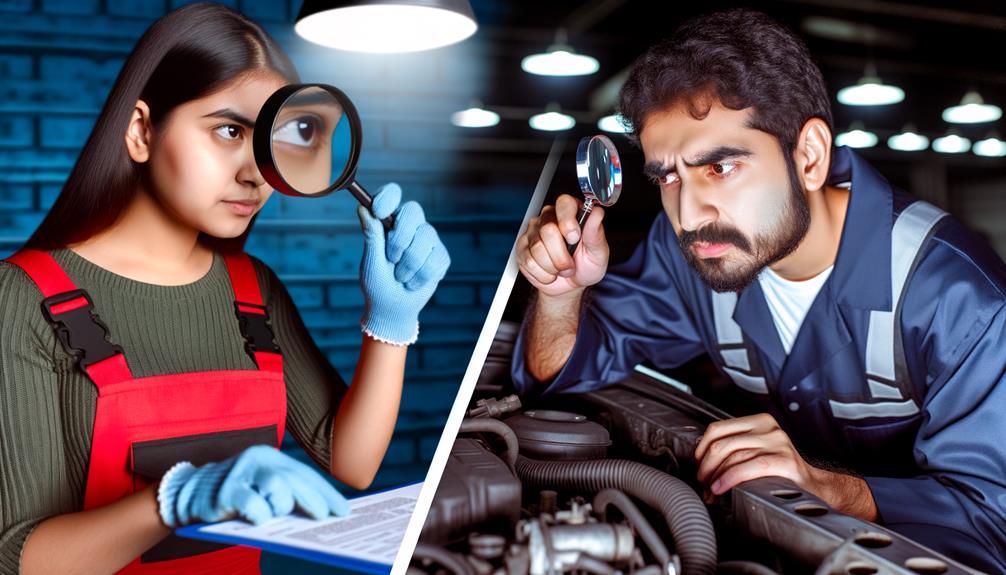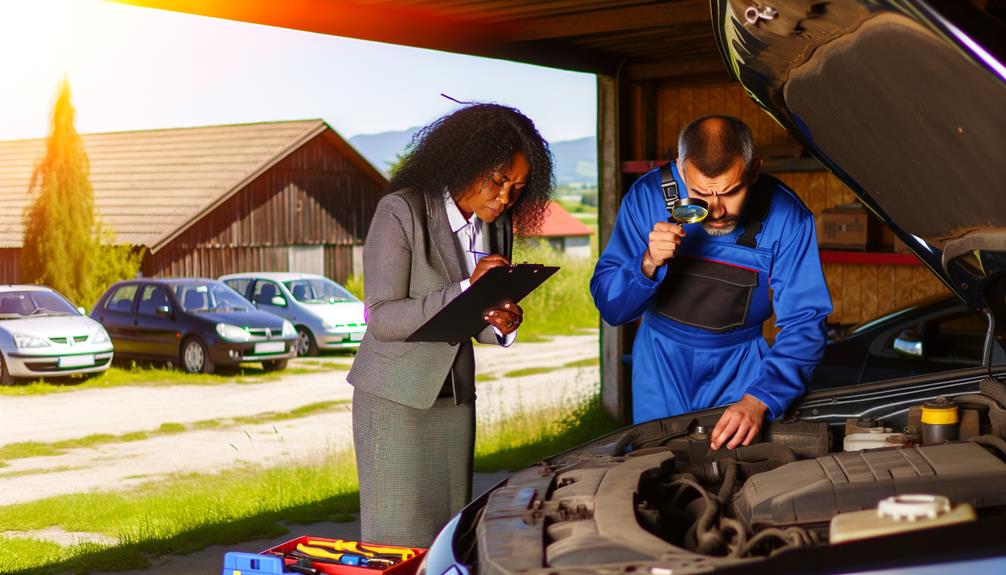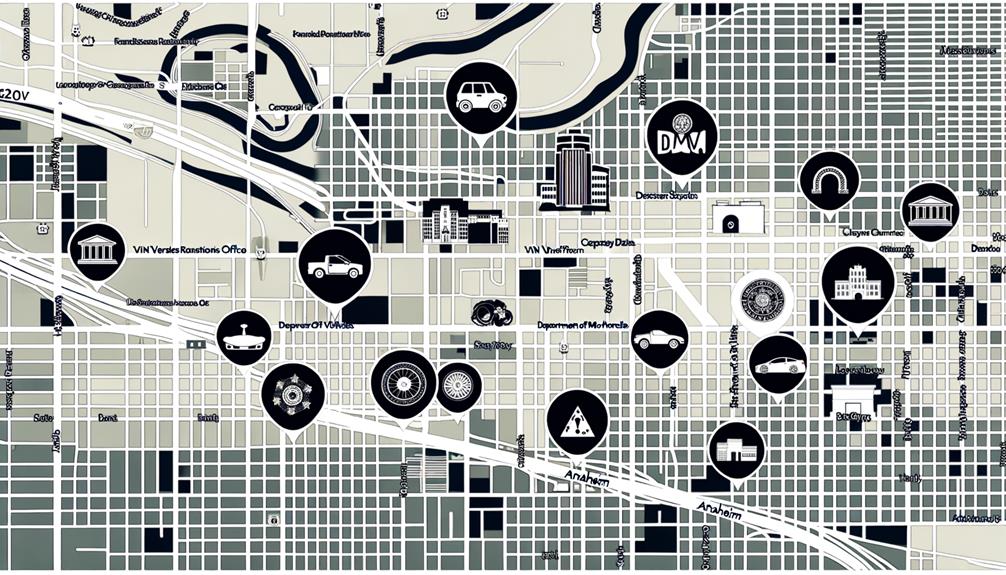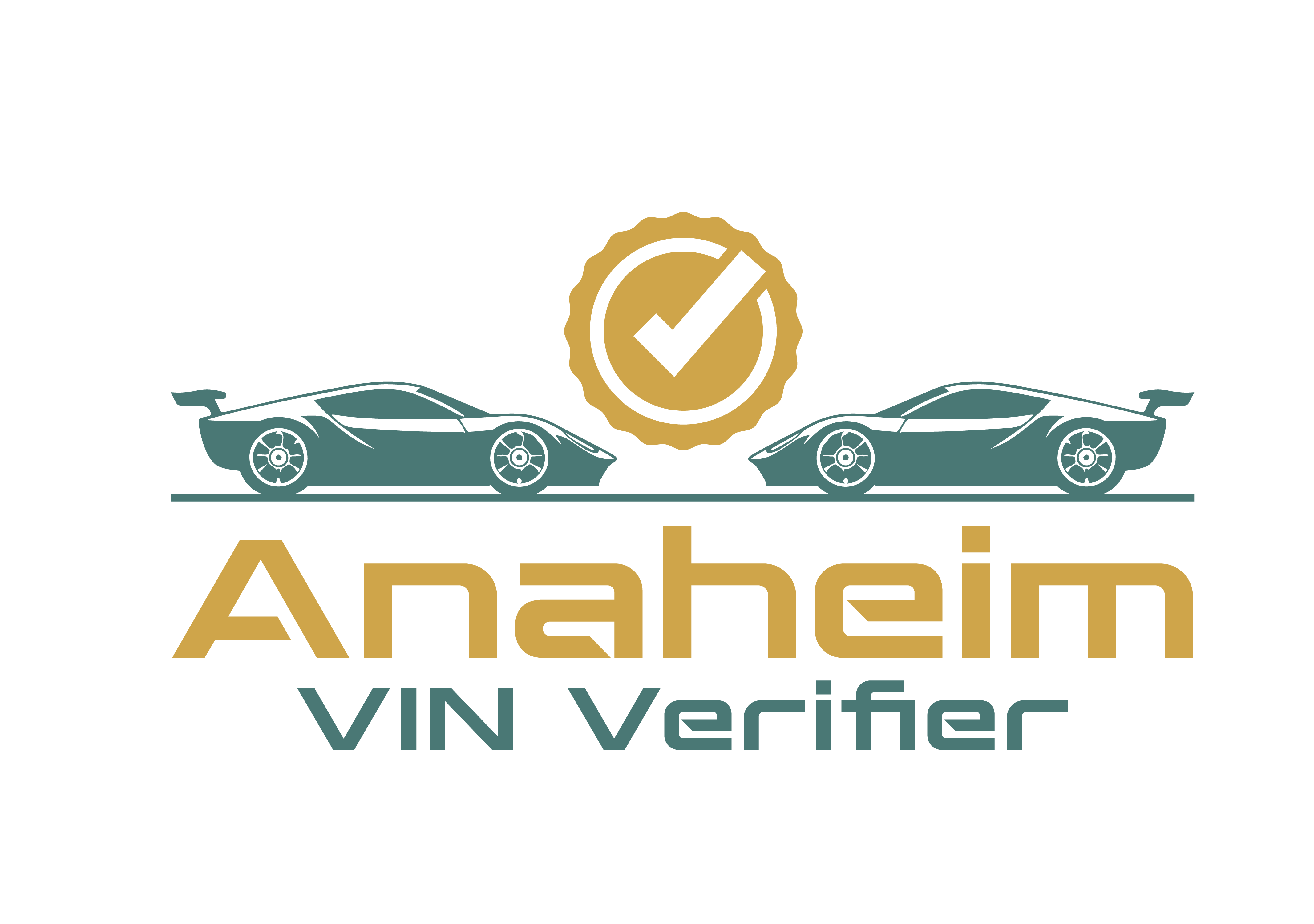When you're navigating the process of car ownership in Anaheim, you'll encounter both VIN verification and vehicle inspections, but it's crucial to understand that they're not the same. While a VIN verifier checks if your car's identification number matches official DMV records—a quick, often straightforward process—a vehicle inspection dives deep into your car's health, scrutinizing everything from emissions to safety features. You might wonder, then, just how these differences could affect your car ownership experience, especially when dealing with legal compliance or resale. Let's explore why distinguishing between these two processes could save you not just time, but possibly a headache down the road.
VIN Verification Explained

VIN verification is a crucial step required by the DMV to ensure that a vehicle's VIN matches its official documentation. When you're aiming to register an out-of-state vehicle in California, you'll find this process not just mandatory but a real safeguard against potential fraud and theft. It's your freedom on the line, ensuring that the car you're driving is legitimately yours under the law.
During the VIN verification, a California licensed vehicle verifier conducts a physical inspection focusing on confirming the vehicle identification number (VIN) against what's listed on your vehicle's documents and records. Besides the VIN, other details such as the emissions label and body type are checked to ensure compliance with state regulations. This inspection is detailed on form REG 31, which effectively becomes your ticket to getting that car registered under your name. They'll check out the year, make, model, and odometer reading—essential details that establish the vehicle's identity
Vehicle Inspection Overview
While VIN verification ensures your vehicle is rightfully yours, a vehicle inspection examines the car's overall operational safety and adherence to emission standards. In California, the DMV mandates that your vehicle meet specific safety standards and emission regulations to guarantee not just your freedom on the road, but everyone's safety. Furthermore, for vehicles moving into California, emissions compliance is crucial and requires that all imported vehicles conform to California's stringent emissions standards, with the Bureau of Automotive Repair (BAR) approval being necessary for verification.
During a vehicle inspection in Anaheim, certified inspectors assess your car's brakes, lights, tires, and steering among other vital components. This isn't just about compliance; it's about ensuring that your vehicle is roadworthy and capable of handling your adventures securely. You'll need to present your vehicle registration and proof of insurance, showing you're up-to-date and responsible
Key Differences Highlighted

Understanding the distinctions between VIN verification and vehicle inspections can help you navigate the requirements set by the California DMV. VIN verification specifically ensures that your vehicle's identification number matches the records in the California DMV database, a crucial step for registering out-of-state vehicles documented on form REG 31. This process, often handled by licensed VIN verifiers, is singular in focus, aimed at confirming the authenticity of your vehicle's VIN.
In contrast, a vehicle inspection delves into the overall safety and mechanical condition of your car. It isn't just about matching numbers but ensuring your vehicle is safe to drive on public roads. These inspections evaluate critical safety features like brakes, tires, and lights, which VIN verifiers don't touch on.
While VIN verification can be provided at no cost by entities like the DMV or CHP, vehicle inspections typically come with a fee, usually performed at private mechanic shops or inspection stations. It's important to note that VIN verifiers are limited to inspecting only specific types of vehicles and are not equipped to assess salvage or junked vehicles, unlike comprehensive vehicle inspections. So, understanding these key differences ensures you're not only compliant but also confident in your vehicle's performance and legality.
Verification Process Steps
To start the VIN verification process, you'll need to present your vehicle along with the registration documents for a physical check. This step is crucial as it ensures that your vehicle's identification number matches the details on your paperwork, a fundamental aspect of maintaining your freedom on the road without legal hassles.
During this check, vehicle verifiers will inspect the physical location of the VIN on your vehicle to confirm its authenticity. They'll fill out the REG 31 form, documenting key details such as the year, make, model, mileage, and fuel type of your vehicle. Remember, unlike comprehensive vehicle inspections, VIN verification focuses solely on identification, not on mechanical reliability or safety features.
It's also advisable to bring supporting documents like the title or bill of sale. While not always mandatory, these can streamline the process, letting you get back to your pursuits quicker. If you're strapped for time, consider using a mobile VIN verification service. These licensed verifiers can come to you, saving you a trip and offering a hassle-free way to comply with California regulations. Always ensure your verifier is DMV authorized to avoid any complications.
Inspection Criteria Detailed

Building on the basic steps of VIN verification, let's explore the specific criteria that inspectors look for during the process. You'll appreciate the thoroughness with which your vehicle is assessed to ensure everything aligns with legal and safety standards. When you bring your vehicle in for VIN verification, the inspector kicks off by confirming the year, make, and model. They'll meticulously check the VIN's location on your vehicle against what's detailed in the title and supporting documents, guarding against any discrepancies.
The inspection criteria don't stop there. Your vehicle's number of wheels and axles are counted, license plate information is collected, and fuel type along with the emissions label are noted—all crucial elements that ensure your vehicle's compliance with state regulations. The odometer reading is also recorded to verify the correct mileage, preserving the integrity of your vehicle's history.
All these details are documented on the REG31 form, a critical piece that must be completed by a licensed verifier or DMV employee. This form is your ticket to proving your vehicle meets all the necessary criteria for a legitimate VIN verification, setting you free to enjoy your ride without legal hassles.
Common Limitations
Despite the thoroughness of VIN verification, there are several limitations you should be aware of. Although a VIN verifier plays a crucial role in ensuring your vehicle's identity aligns with its records, not all situations can be handled by a mobile VIN verifier or even your typical licensed verifier in Anaheim. For instance, if you've got your eyes on a revived salvage vehicle or perhaps a motorcycle that's missing essential DMV documentation, you'll find that these can't be verified by your local VIN verifier. This task falls exclusively under the purview of the Department of Motor Vehicles or the California Highway Patrol.
Moreover, vehicles made post-1980 missing a Federal Safety label also fall outside the scope of services offered by licensed VIN verifiers. This restriction might feel like a leash on your freedom to easily register such vehicles. Similarly, if your vehicle has undergone significant modifications not documented in DMV records, a mobile VIN verifier won't be able to help you out. They are strictly prohibited from inspecting such altered vehicles.
Verification Locations in Anaheim

Several locations in Anaheim offer VIN verification, ensuring you have convenient options whether at home or at a designated site. If you're seeking flexibility and ease, mobile verification services are your go-to. They'll come right to your doorstep, eliminating the need to disrupt your busy schedule. Just remember, these services usually carry a fee, but think of the time you'll save!
For a more structured approach, the DMV is a reliable choice. They provide VIN verification at no cost, but you'll need to complete form REG31. It's a straightforward process, and while there, you can handle other DMV registration needs too. If you're an AAA member, take advantage of their free service, though it's good to note that it is limited to specific vehicle types and doesn't include mobile options.
Lastly, don't overlook the opportunity to visit a CHP officer for verification. CHP offices offer this service for free, although you'll need a referral. It's an ideal choice if you value thoroughness and official oversight in ensuring your vehicle meets DMV standards for registration compliance. Choose what fits your lifestyle and get verified with ease!
Costs and Payment Options
Exploring the costs associated with VIN verification in Anaheim can help you budget effectively for this necessary service. You've got options that align with how you prefer to manage expenses. If you're looking to minimize costs, heading to the DMV or CHP for a free verification is your best bet. However, if convenience is your priority, mobile services, though pricier, offer flexibility. These range from $67 to $147, influenced by your location and the provider's distance.
Remember, if you're a AAA member, you can sidestep extra charges altogether with their complimentary service. For on-site verifications at an office, you're looking at about $25. It's crucial to check if your vehicle qualifies for mobile verification to avoid unnecessary fees, especially with mobile verifiers charging extra for distances over 10 miles. Always confirm the pricing upfront.
As for payment, you're covered with multiple options. Cash, checks, and digital payments such as Zelle or Venmo are widely accepted, alongside the usual credit and debit cards. This flexibility ensures that you can pay in the way that suits you best, keeping your journey towards compliance as smooth as possible.

